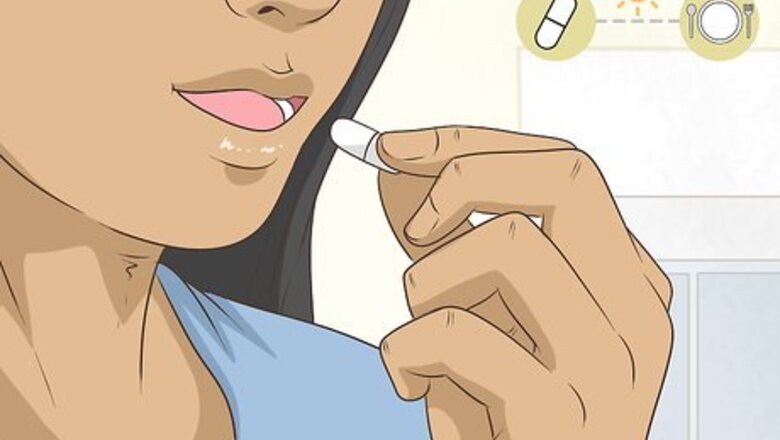
views
X
Trustworthy Source
Consumer Reports
Nonprofit organization dedicated to consumer advocacy and product testing
Go to source
that treats the abdominal pain and constipation associated with the conditions IBS-C and Chronic Idopathic Constipation (CIC)[2]
X
Trustworthy Source
PubMed Central
Journal archive from the U.S. National Institutes of Health
Go to source
. Linzess works differently from other similar medications because it increases the amount of intestinal fluid and promotes faster transit of fecal matter[3]
X
Trustworthy Source
American Academy of Family Physicians
Organization devoted to improving the health of patients, families, and communities
Go to source
. Your doctor will determine if Linzess is right for you, and advise you on how to take it and what side effects to watch for. In most cases, you’ll be advised to take 1 capsule daily with water on an empty stomach. Alternatively, you can open the capsule and swallow the beads inside with a spoonful of applesauce or a small amount of water.[4]
X
Research source
Swallowing a Capsule
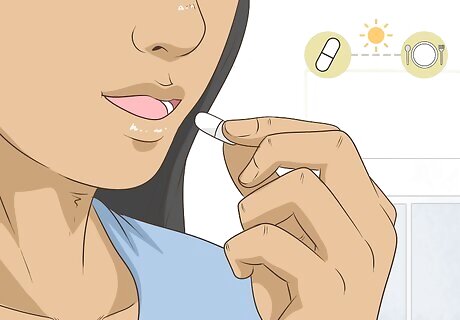
Take 1 daily capsule in the morning on an empty stomach. You want your stomach to be as empty as possible when taking Linzess, which makes "shortly after waking up" the ideal time for most people. Make swallowing the capsule a set part of your early morning routine so you remember to do it every day. You don't have to take the capsule at the exact same time every morning (for instance, if your wake-up time varies). The important thing is to take it on an empty stomach. Instead of focusing on a time, consider making it (for example) the second or third thing you do during your morning routine. It's generally safe to take other prescribed medications at the same time, but clear this with your doctor first. Ask your doctor what to do if you forget to take a dose before eating. Never “double up” on the medication the following day if you forgot the prior day’s dose.
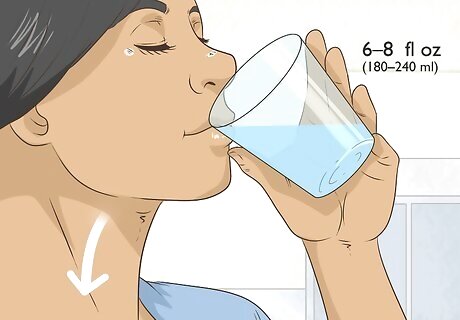
Swallow the capsule whole with a glass of water. Drink 6–8 fl oz (180–240 ml) of tepid to slightly cool water with your Linzess dose. Do not chew or crush the capsule—swallow it whole within a few seconds of putting it in your mouth. Don’t take Linzess with liquids other than plain water, as no testing has been done using other drinks. For safety when swallowing, it is not recommended to take Linzess or any other type of oral medication without water.
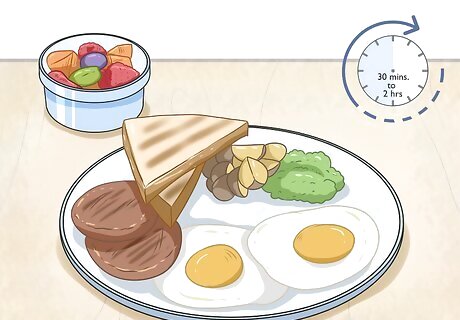
Wait 30 minutes to 2 hours to eat, based on your doctor’s guidance. According to the manufacturer, you should wait 30 minutes before eating after taking your daily capsule. However, based on their experience with other patients, your doctor may recommend a longer waiting period—possibly up to 2 hours. The goal is for the medication to be digested and absorbed fully before you eat. Adjust your morning routine so that taking a Linzess capsule is a normal part of your daily regimen.
Eating with Applesauce
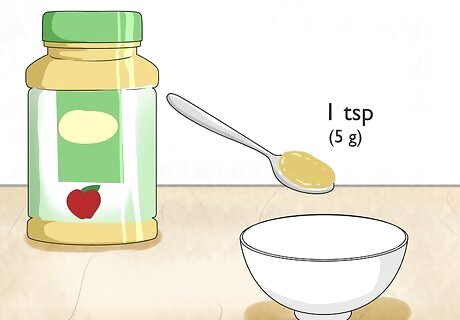
Add 1 tsp (5 g) of room-temperature applesauce to a small dish. If you cannot swallow a Linzess capsule whole, the makers of the drug recommend 2 alternatives: taking the capsule contents with either applesauce or water. If you prefer applesauce, make sure it is at room temperature before proceeding. No studies have been done to determine if the contents of Linzess capsules can be taken with other soft foods (for example, yogurt), so stick with applesauce or use water. As when swallowing the capsules whole, take this Linzess dose in the morning on an empty stomach, 30-120 minutes before your first meal (depending on your doctor’s recommendation).
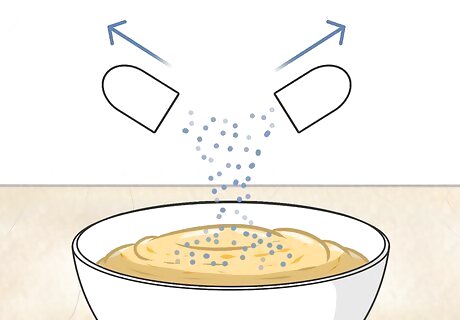
Open 1 Linzess capsule and pour the beads onto the applesauce. Hold the Linzess capsule over the dish of applesauce and use your hands to snap it into 2 halves. The capsule should come apart fairly easily right in the center. Each Linzess capsule is filled with small, medically-inert beads that are coated by the actual medication. Do your best to make sure every single bead falls into the applesauce. Do not stir the beads into the applesauce. Just leave them sprinkled on top.

Swallow the whole amount of applesauce and beads right away. Use a spoon to scoop up all the applesauce and beads, put it in your mouth, and swallow without chewing. Follow with a drink of water, if desired. Never prepare a dose of Linzess in applesauce ahead of time. Pour the beads onto the applesauce only when you’re ready to take it right away.
Mixing with Water
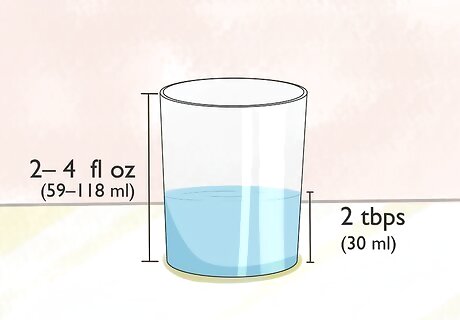
Fill a small cup with 2 tbsp (30 ml) of tepid water. A cup in the 2–4 fl oz (59–118 ml) range is ideal here. The water shouldn’t be too warm or too cool—aim for room temperature. Use this method only if: you cannot take a whole capsule orally with water; and, you cannot (or choose not) to take the capsule contents with applesauce. Like with any other method of taking Linzess, follow this dosing procedure once daily on an empty stomach, 30-120 minutes before eating.
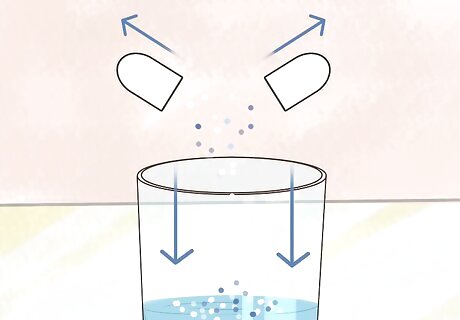
Open 1 capsule and pour the beads into the water. The capsule should separate in the middle with the use of minimal force. Open the capsule directly over the cup so that all the beads end up in the water.

Stir the beads in the water for 30-60 seconds. Use a small spoon or coffee stirrer to swirl the water gently. Make sure to stir for a minimum of 30 seconds. In this case, the goal is to dissolve the medicated coating from the medically-inert beads into the water. You won’t be able to see this happen, so simply focus on stirring for the recommended amount of time.

Swallow the water and beads right away in a single gulp. Do not chew on the beads. Most of the medication should now be dissolved in the water, but some may still be on the beads. The average person should have no problem gulping down 2 tbsp (30 ml) of water all at once.
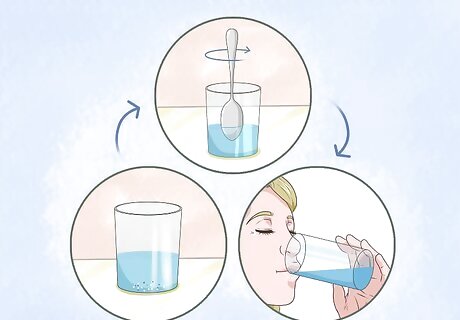
Repeat the process (minus the capsule) if there are beads in the cup. Check the cup for any remaining beads. If there aren’t any, you’re done. If there are, add another 2 tbsp (30 ml) of water, stir it gently (for 15-30 seconds this time), and gulp it down. Do not add additional medication! If you still have a few beads in the cup after this second go-round, simply discard them. All the medication will have dissolved off of the beads by this point.
Getting and Storing Capsules
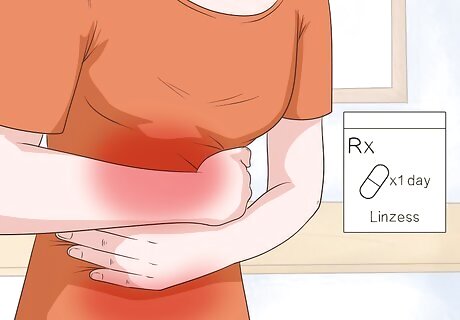
Seek a Linzess prescription if you have IBS-C or CIC. Linzess is marketed for the treatment of 2 specific medical conditions: irritable bowel syndrome with constipation (IBS-C) and chronic idiopathic constipation (CIC). You should not take Linzess unless you have been diagnosed with one of these conditions. Linzess is not a traditional laxative. It should, however, accelerate your bowel movements, and it may help calm the pain-sensing nerves that cause abdominal discomfort. The “idiopathic” in CIC means that you have chronic constipation due to an undetermined cause.
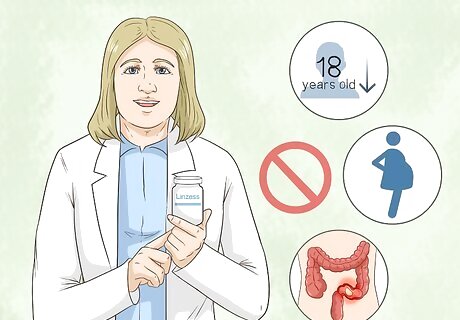
Talk to your doctor to make sure you can safely take Linzess. Not everyone with IBS-C or CIC should take Linzess. If you are in one or more of the following groups, you should avoid taking the medication altogether, or at least have a detailed consultation with your doctor to weigh the potential risks: Children under age 18. Linzess is not recommended for any child, but it’s particularly important that kids under 6 not take it. It can cause severe diarrhea and rapid dehydration in young children. Pregnant or nursing women. It’s not clear whether the medication can be transmitted in dangerous amounts to a fetus or nursing child, but women in these categories should consider the risks very carefully. People with bowel blockages. A bowel blockage is a physical or functional blockage that prevents contents from passing through the small or large intestines. Such blockages must be cleared by other medical means and under a doctor’s direction before Linzess can be considered.

Discuss the possible side effects and how to respond to them. The most common side effect of Linzess is diarrhea, but in most cases it is not serious enough to require the patient to stop the medication. Talk to your doctor about what should be considered “severe” diarrhea in your case and what to do if it happens to you. Linzess can also cause internal bleeding in rare cases. If you produce stools with red blood or a black tarry substance in them, stop taking the medication right away. Call your doctor immediately or get emergency medical assistance. Other possible side effects include bloating, flatulence, and headaches.
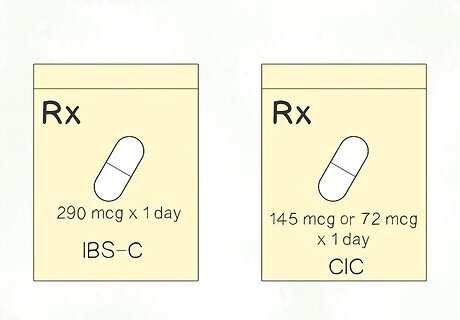
Fill your prescription for 72, 145, or 290 mcg capsules. Linzess comes only in capsule form, in 3 different strengths. Your doctor will determine the appropriate dose for you, but the general recommendations are as follows: 290 mcg capsules once daily: patients with IBS-C. 145 mcg or 72 mcg capsules once daily: patients with CIC.
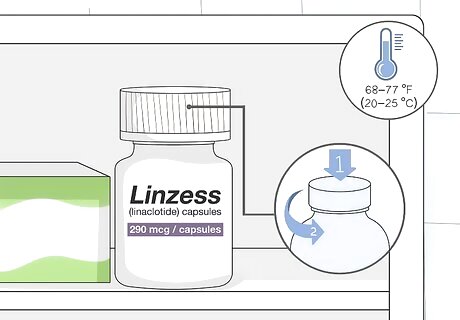
Store the bottle in a secure cupboard at room temperature. For safety and to preserve the medication, keep it in its labeled prescription bottle. Likewise, store it in a dry, dark place with standard room temperature and humidity—a high cupboard is an ideal spot. For the safety of children and pets, make sure the child safety cap is secure on the bottle, and make sure your storage spot is out of reach. Add a lock to the cupboard door if needed. Linzess should be stored between 68–77 °F (20–25 °C) and at roughly 50% relative humidity.











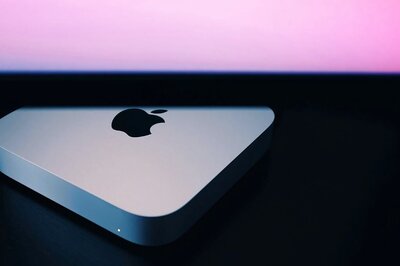

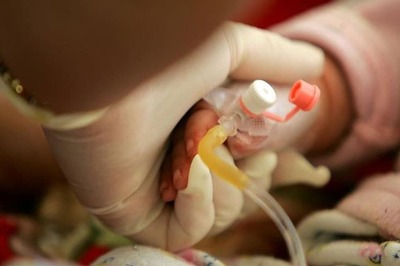



Comments
0 comment